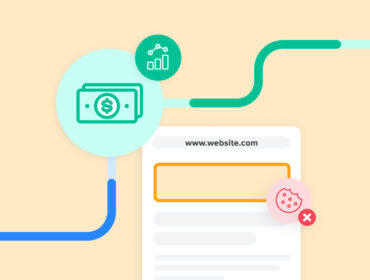A year of Apple’s Mail Privacy Protection
It’s been a full year since Apple launched Mail Privacy Protection (MPP), a new feature designed and released to (allegedly) help email users have a more active hand in protecting their data. By eliminating the ability for marketers and publishers to use pixels to collect information like open rates, though, MPP threatened to turn email marketing on its head.

Publishers and brands were concerned — rightfully so. Newsletters were — and still remain — a reliable way to nurture a relationship with audiences and drive engagement. But the new feature had many asking: How do we measure newsletter engagement?
While the initial news of Apple’s MPPs may have sent the industry into a tizzy, the dust has settled. Businesses have found ways of navigating the disruption that MPP intended to bring upon the industry. Sophisticated technology providers have developed methods to replace the data lost to MPP, allowing the industry to continue connecting with and measuring the impact of email newsletters on current and potential customers.
New ways to measure impact with ease
Email marketers have learned that without data on email opens, they’d have to look more carefully at other metrics to understand email engagement, like clicks on email links, for instance.
Some businesses have gone a bit further, getting creative with how they gather data and audience signals.
Consider the Financial Times and Axios. These publishers secure first-party data signals from their audiences by way of surveys and questionnaires within the newsletter itself. The FT even enters survey respondents into a raffle for a gift card as a way to expand its data bank. Not only is this a great way to collect concrete data that offers insight into open rates and engagement, but it also provides businesses with qualitative data and first-party audience insights on what consumers and email subscribers want, care about, and prefer to see from your newsletter.
Then there are solutions like LiveIntent’s. Our LiveConnect and LiveConnect Email Extension tags help publishers gather interest and intent signals across their newsletters and websites, including engagement with ads and content links. LiveIntent is able to mitigate signal loss for publishers with its innovations, helping them secure their futures.
The power of first-party data insights
Let’s not forget the value of first-party insight in building audience relationships. First-party data can help you monetize content and audiences while also enabling you to improve personalization and deliver a superior customer experience.
According to Likemind, first-party data can become “the machine and the core” of how a business operates and grows. “Email has the benefit of being a really safe space because it’s an opt-in environment,” and users who stay active are highly engaged.

That’s useful for audience metrics, but it also provides Likemind with data that goes beyond open rates, click rates, and ad yield. With first-party data, Likemind can measure advertiser performance both in email and on the web while also building segmentation strategies that can be used for personalization and enhanced targeting for its commercial partners.
Taking a holistic approach
When it comes to understanding audience data and engagement, nothing beats a holistic, unified view of one’s audience or customer. To fully understand your audience’s relationship with your properties, including your email newsletter, it’s important to look at engagement across channels, platforms, and devices. Try leaning on identity resolution, which connects customer interactions (online or offline) with your business to a single audience profile, to get a more complete view of audience behavior. This will allow you to build a robust data asset and distill more impactful insights about your customers and prospects.
Apple’s MPP may have changed the digital monetization and engagement landscape, but it didn’t deliver a death blow to email marketing — far from it. By remaining agile and implementing strategies that always put customers front and center, businesses are still seeing remarkable success with email newsletters.


